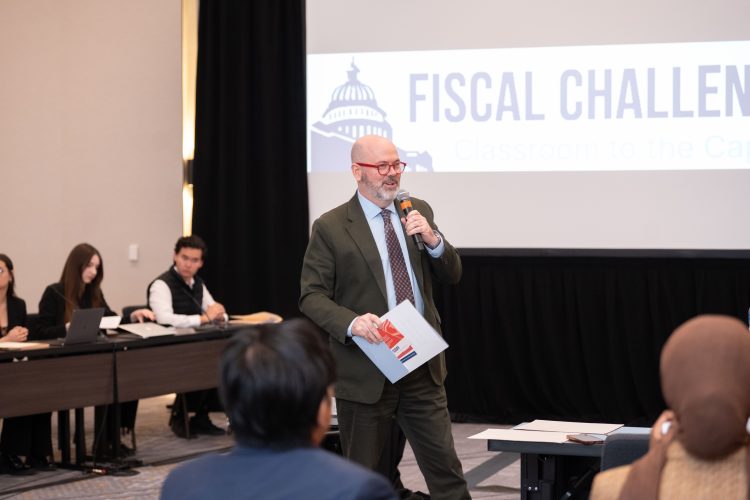Congress voted in February 2018 to again suspend the federal debt limit. On March 1, 2019, it went back into effect and was set at the level necessary to include all debt racked up prior to that date ($21.988 trillion). While in the past there has been a debate over whether to attach conditions to a debt ceiling increase, the most recent suspension of the debt ceiling included no such provisions.
A recent letter from Treasury Secretary Steve Mnuchin urges lawmakers to raise the limit before the beginning of September or risk the government defaulting on its obligations, saying:
“Since there is a reasonable uncertainty in projecting government cash flows, it is impossible to identify precisely how long extraordinary measures will last. We model various scenarios for our cash projections. Based on updated projections, there is a scenario in which we run out of cash in early September, before Congress reconvenes..”
Despite its name, the debt limit has never proven to be an effective means of controlling debt. And yet failure to raise the debt limit would risk serious harm to the nation’s creditworthiness and the global economy. The main problem is that debt limit debates commonly take place long after decisions have already been made on the tax and spending policies that produce the debt. This disconnect gives the debt limit an arbitrary nature, which is made worse by the fact that it has never been tied to an economically significant target such as the debt-to-GDP ratio.
Now that the debt limit has been reinstated, policymakers should consider enacting reforms that tie future increases in the limit to policy decisions or economic circumstances at the time they occur.
I. What Should Policymakers Do?
A. Increase The Debt Limit Whenever It is Close to Being Breached
The Concord Coalition has long advocated a comprehensive fiscal sustainability plan that stabilizes the debt as a percentage of the economy and then gradually reduces it. Prompt enactment of such a plan would strengthen the economy, save future generations from an unsustainable debt burden, and protect the nation’s security.
Achieving such a plan will require tough negotiations over specific spending and tax policy options that can get the job done. They should not be over the government’s ability to pay for obligations it has already incurred.
Congressional approval of a debt limit increase is necessary to maintain the full faith and credit of the United States government. Failure to approve an increase would not be an effective way to control the debt. All of the same obligations would still accrue. The only change would be to compel a default on commitments that result from past policy decisions. Such a default could potentially include Social Security, Medicare and veterans benefits, vendor payments, tax refunds, student loans and interest payments on outstanding debt.
There is no established “prioritization” process for the government to decide which bills to pay and which to ignore. It has always been assumed, for good reason, that the United States of America would pay its bills. Refusing to pay some or all of its bills would not be an act of fiscal responsibility; it would be turning the federal government into a deadbeat.
The consequences for government finances, the economy and financial markets would be dire as investors could no longer count on U.S. bonds being the “safest investment in the world.” Delaying a debt limit increase that is both necessary and inevitable would do nothing more than confirm the political dysfunction that already threatens the nation’s credit rating.
There is no fiscal need for such risk-taking behavior. Stabilizing the debt and bringing it down to a sustainable level do not require that it be frozen at some arbitrary nominal amount. In a growing economy anything measured against the size of that economy can grow in dollar terms even if it shrinks as a percentage of GDP. Thus, following World War II the debt in 1946 was $242 billion and 106 percent of GDP. By 1974, the debt had grown in dollar terms to $344 billion but had shrunk to 23 percent of GDP — the post World War II low.
Moreover, no plausible set of policy options can really be proposed for consistently preventing breaches in the debt limit. In recent years, budgets proposed by both President Obama and House Republicans require substantial increases in the debt limit. The same is true of the model bipartisan plans recommended by the Simpson-Bowles commission and the Domenici-Rivlin task force.
Unlike budget enforcement mechanisms such as statutory spending caps or the pay-as-you-go (PAYGO) rules for entitlement expansions and tax cuts, the debt limit places no restrictions on specific tax and spending decisions. If deficits result from these policy decisions, or if the economy fails to grow as projected, the debt limit must be increased to prevent a default on the government’s obligations.
Furthermore, because the debt limit is denominated in dollar figures, it does not take into account inflation or economic growth, and thus is at risk for breach even under a regime of relative fiscal restraint.
Under these circumstances, the case for immediate increases in the debt limit when necessary is clear; refusing to raise the limit would not prevent an accumulation of unpaid bills, and the resulting damage to the nation’s creditworthiness from a default would be severe. To effectively address the real fiscal threat, Congress and the president must move quickly to put the federal budget on a more responsible course by changing the underlying policies that are producing an unsustainable debt.
B. Enact a Fiscal Sustainability Plan
Although some legislation over the last few years has helped reduced deficits from their recession highs, there remains much to be done and policymakers must get to the unfinished business swiftly.
After raising the limit, Congress and the president should promptly develop a comprehensive, specific and credible plan to place our nation on a sustainable fiscal path. Lawmakers should consider the entire federal budget to be on the table — including entitlement programs, the levels of domestic discretionary and defense spending, along with revenues.
The immediate fiscal goal should be to stabilize the debt-to-GDP ratio within the 10-year budget window, if not sooner. No procedural mechanism to control the debt will work if the policies don’t add up. And until an overall framework is agreed upon, it is likely that policy decisions will continue to be driven by short-term crisis management rather than responsible strategic planning. Without such a framework, economic uncertainty will continue, public frustration with the political process will grow and the debt burden hanging over future generations will remain as our legacy.
C. Develop a More Effective Approach to Raising the Debt Limit
As part of a comprehensive fiscal sustainability plan, the president and Congress should consider a more effective approach to limiting debt. The current approach does nothing to constrain fiscal policy and is not even intended to be a true “limit.” It leaves the president and Congress with no choice but to raise the limit when it is reached.
In a 2011 report, the Government Accountability Office (GAO) raised concerns about the current approach in which decisions that create the need to borrow are made separately from decisions to increase the debt limit. GAO concluded that since the debate generally “occurs after tax and spending decisions have been enacted into law, Congress has a narrower range of options to effect an immediate change to fiscal policy decisions and hence to federal debt.”
In GAO’s view, improving the link between fiscal policy decisions that increase the debt and changes in the debt limit could improve the situation by helping to avoid the uncertainty and disruptions inherent in the current process. These reforms could “facilitate efforts to change the fiscal path by highlighting the implications of these spending and revenue decisions on debt,” according to GAO.
In light of these concerns and the disruption that has been caused by the current process, Congress should more closely align debt limit increases with the fiscal policy decisions that create a need for more borrowing.
There is no question that the need to raise the debt limit has in the past provided an opportunity to assess prior fiscal decisions and make corrections. Major increases in the limit have often accompanied the enactment of deficit-reduction plans; examples include the November 1990 increase of $915 billion, the August 1993 increase of $530 billion, and the August 1997 increase of $450 billion. The 2010 law raising the debt limit reinstituted statutory pay-as-you-go (PAYGO) rules and prompted the president to create the bipartisan National Commission on Fiscal Responsibility and Reform (Simpson-Bowles).
In the absence of such linkages, Congress has been reluctant to raise the debt limit by more than is necessary to get through a short period of time. Thus, while the debt limit has not, by itself, been a fiscal firewall, in the absence of more effective mechanisms it has acted as a budgetary “speed bump” to provide a sense of fiscal discipline.
A dispute over the debt limit produced the Budget Control Act of 2011 (BCA), which established new spending caps and created a process for achieving additional deficit reduction. However, the brinkmanship, partisan acrimony and apparent willingness of some members of Congress to allow a default proved very damaging to an economy struggling to recover. Repeating that error would be a grave mistake.
Policymakers have other options available to exercise fiscal discipline, including through a return to the “regular order” of budget resolutions and appropriations bills, along the lines of the bipartisan budget agreement in December 2013 and again in 2015.
For example, the congressional budget resolution could be used to expedite consideration of a measure increasing the debt limit by the amount specified in the budget resolution. A separate vote could be required on raising the debt limit to accommodate the budget resolution policies. If the vote failed, the result would defeat the budget resolution, not risk a default on current obligations.
Alternatively, Congress could require that a debt ceiling increase be included in any bill that is estimated to require borrowing that will exceed the limit. This approach was used in several laws enacted in 2008 and 2009 to respond to the financial crisis and the economic downturn.
Another possibility would to replace the current dollar cap entirely and adopt a new system that would set a targeted ratio of debt to GDP and require actions or automatic consequences if the debt exceeded that level.
In a 2015 report, the GAO examined three alternatives to the current system:
- Link Action on the Debt Limit to the Budget Resolution
- Provide the Administration with the Authority to Increase the Debt Limit, Subject to a Congressional Motion of Disapproval
- Delegating Broad Authority to the Administration to Borrow as Necessary to Fund Enacted Laws
All of these ideas should be considered. However, there should be no mistake about debt limit increases; we have to pay our bills.
II. History and Significance of the Debt Limit
Upon enactment of the Second Liberty Bond Act of 1917, Congress began the practice of imposing limits on specific categories of debt. As a recent Congressional Research Service report recounts, in 1939 Congress eliminated the separate limits and created an aggregate limit covering nearly all public debt.
Today, debt incurred by the Treasury continues to be subject to an overall statutory limit set by Congress. Congress has established in law the maximum amount of debt the federal government may issue. This limit has not been tied to any particular fiscal policy goal, such as keeping the debt stable as a percentage of the economy. For that reason, it has had little effect on the nation’s underlying spending and tax policies.
The Treasury does not have legal authority to issue any debt above this statutory limit. To avert a default on its credit obligations or a shutdown of government operations, occasionally it is necessary to raise the limit. The “Bipartisan Budget Act of 2015” temporarily suspended enforcement of the debt ceiling until March 16, 2017.
On that date, the debt limit was reset to the total federal debt at the time ($19.808 trillion).
Debt subject to the limit has two components: (1) debt held by the public — debt held by any individual or entity that is not the federal government, such as a mutual fund, an individual investor, a foreign government or a municipal government; and (2) intragovernmental debt — debt the government owes itself, such as money owed to the Social Security Trust Funds, the Medicare Hospital Insurance Trust Fund, and the Civil Service Retirement and Disability Fund.
There is a small amount of the “total debt outstanding” that does not fall under the debt limit. That is why the numbers commonly reported as the “national debt” might at times look larger than the debt limit.
|
Increases in the Debt Limit Since 1997 |
||
|
Date |
New Debt Limit ($ billion) |
Change from Previous Limit ($ billion) |
|
8/5/97 |
5,950.0 |
450.0 |
|
6/28/02 |
6,400.0 |
450.0 |
|
5/27/03 |
7,384.0 |
984.0 |
|
11/19/04 |
8,184.0 |
800.0 |
|
3/20/06 |
8,965.0 |
781.0 |
|
9/29/07 |
9,815.0 |
850.0 |
|
7/30/08 |
10,615.0 |
800.0 |
|
10/3/08 |
11,315.0 |
700.0 |
|
2/17/09 |
12,104.0 |
789.0 |
|
12/28/09 |
12,394.0 |
290.0 |
|
2/12/10 |
14,294.0 |
1,900.0 |
|
8/2/11 |
14,694.0 |
400.0 |
|
9/21/11 |
15,194.0 |
500.0 |
|
1/27/12 |
16,394.0 |
1,200.0 |
|
2/4/13 |
Limit Suspended |
N/A |
|
5/19/13 |
16,699.4 |
305.4 |
|
10/17/13 |
Limit Suspended |
N/A |
|
2/8/14 |
17,211.6 |
512.2 |
|
2/15/14 |
Limit Suspended |
N/A |
|
3/16/15 |
18,113.0 |
901.4 |
|
11/2/15 |
Limit Suspended |
N/A |
|
3/16/17 |
19,808.8 |
1,695.8 |
Intragovernmental Debt. For the most part, intragovernmental debt consists of trust fund accounts that are credited with dedicated revenue such as Social Security and Medicare payroll taxes (FICA). In theory, any surpluses in these accounts are “saved” for future benefit obligations. As of the end of February 2017, intragovernmental debt (subject to the limit) totaled $5.548 trillion.
Debt Held By the Public. When revenues received by the Treasury are not sufficient to meet the expenses of the federal government, the Treasury borrows to obtain the cash necessary to meet its obligations. Although much of the federal revenue used to finance government operations is received in the spring when individuals file their income tax returns, the government incurs a steady stream of operating costs all year long.
Consequently, to smooth cash flow and enable the federal government to finance daily operations, the Treasury borrows money by selling securities to the public. These securities comprise the debt held by the public. Debt held by the public rises and sometimes falls, depending on the government’s immediate borrowing needs. It represents the cumulative amount of borrowing required to finance budget deficits. Because debt held by the public flows through financial markets, it has more immediate relevance to the economy than intragovernmental debt, which is a matter of internal bookkeeping. As of the end of February 2017, debt held by the public (subject to the limit) totaled $14.411 trillion.
Intragovernmental debt automatically increases every year by the amount of trust fund surpluses invested in Treasury securities, regardless of whether the budget is in surplus or in deficit. For example, in every year from 1984 to 2010 the Social Security program generated a cash surplus — the federal government collected more dedicated revenues than it needed to pay current benefits. Surplus taxes were credited to the Social Security Trust Fund in the form of special obligation Treasury bonds. In addition, the trust fund was credited with interest on its balance in the form of additional bonds. As Social Security surpluses grew, so did the Social Security Trust Fund, and intragovernmental debt increased.
Thus, unlike debt held by the public, the growth of intragovernmental debt does not reflect an imbalance in short-term fiscal policy. It represents a very different problem — growing long-term obligations that future taxpayers will have to pay for when the Treasury ultimately has to transform these bonds into benefits.
III. What Has Been Driving the Need to Raise the Debt Limit?
Unchecked growth in either category of debt will generate pressure to raise the debt limit. At the end of the last fiscal year, the Treasury Department reported that total debt subject to the limit had increased by $5.955 trillion since the end of FY 2009. Of that, $5.276 trillion (88.6 percent) is attributable to an increase in debt held by the public, and $679 billion (11.4 percent) is attributable to an increase in intragovernmental debt.
To understand the role of each component relative to the debt limit, consider the 1998-2001 period when four years of budget surpluses allowed the federal government to buy back, or “pay down,” $453 billion in debt held by the public. Over those same four years, intragovernmental debt increased by $853 billion (largely due to substantial Social Security surpluses credited to the Social Security Trust Fund). As a result, the total debt subject to the limit rose from $5.328 trillion at the end of FY 1997 to $5.733 trillion at the end of FY 2001.
When Congress increased the debt limit in 2002 from $5.95 trillion to $6.40 trillion, debt held by the public was actually lower than it had been when the debt limit was previously increased in 1997. The limit was raised to accommodate the increase in intragovernmental debt.
The sharp economic downturn and the crisis in financial markets, along with various fiscal measures taken in response, are responsible for most of the recent debt buildup. These changes have led to several debt ceiling increases within a relatively short period of time. In July 2008, the Housing and Economic Recovery Act increased the debt limit by $800 billion, to $10.615 trillion. In October, another addition was needed and a $700 billion increase was attached to the Emergency Economic Stabilization Act of 2008. In February 2009, the American Recovery and Reinvestment Act of 2009 raised the statutory limit to $12.104 trillion — an increase of $789 billion. In February 2010, the limit was raised to $14.294 trillion, an increase of $1.9 trillion.
The BCA included a three-step procedure that was successfully used to increase the debt limit until it reach a $16.394 trillion limit. The BCA procedures permitted the president to raise the debt limit subject to a congressional resolution of disapproval that the president could veto.
When the Treasury approached the limit again in early 2013, Congress chose to enact a temporary suspension of the debt limit instead of raising it. The suspension was coupled with the “No Budget No Pay Act” of 2013 that required lawmakers to approve a budget resolution or lose their salaries. The suspension expired on May 19, 2013 and set the limit at what the current debt was at the time: $16.699 trillion.
On October 1, 2013, the federal government shut down when Congress and the President could not reach an agreement over the Affordable Care Act and the federal budget. The shutdown last for 16 days and came very close to the date that the Treasury Department would have run out of extraordinary measures to avoid default. As part of a compromise to reopen the government, the debt limit was once again suspended on October 16. When that suspension expired on February 7, 2014, the debt limit reverted to $17.212 trillion.
The limit was again suspended on February 15, 2014 and went back into effect on March 15, 2015 as a result of the Temporary Debt Limit Extension Act of 2014. Most recently, the debt limit was suspended in November 2015 as part of the Bipartisan Budget Act. It was reinstated on March 16, 2017 at $19.808 trillion.
IV. What Measures Can Treasury Take to Avoid Breaching The Debt Limit?
The Treasury can employ a few financial maneuvers to avoid breaching the debt limit and defaulting on the debt. These transactions are legal but can be a source of unease among lawmakers and the public. Moreover, all of these measures merely postpone the inevitable — an increase in the statutory debt limit.
For example, the Treasury can:
“Suspend reinvestment of government securities in federal trust funds such as the G-Fund of the federal employees’ Thrift Saving Plan (TSP) or the Civil Service Retirement and Disability Fund (CSRDF). Such action prevents this part of the intragovernmental debt from growing. Manipulating retirement funds may sound ominous, especially to federal employees, but laws enacted in the 1980s require the Treasury to restore all due interest and principal to the fund as soon as it can.
Delay or suspend the auction of public debt instruments. This prevents debt held by the public from growing. Individuals and institutional investors regularly purchase Treasury securities for investment purposes. The revenue from the sale of securities is then used to manage the cash-flow needs of the federal government. Therefore, suspending the sale of T-bills can be very disruptive to domestic and international financial markets as well as to the operations of the federal government.”
Precedent for Extraordinary Measures. During the protracted debate over the last debt ceiling increase in 2011 and 2012, and after March 2015, the Obama administration used several of these measures. The George W. Bush administration resorted to such tactics in 2006, 2004, 2003 and twice in 2002. The Clinton administration undertook similar measures in 1995 and 1996.
Cost to the Treasury. While these measures can delay an increase in the debt limit, the GAO has concluded that the delays result in costs to the Treasury.
In a February 2011 report, the GAO warned that if Treasury is forced to take extraordinary steps such as postponing auctions, resources will be diverted from other priorities, uncertainty will be added to the market, and borrowing costs could increase.
In a July 2012 report, GAO estimated that the delays in raising the debt limit during 2011 increased Treasury’s borrowing costs by about $1.3 billion in FY 2011.
V. Conclusion
Leaders of both parties have often indulged in gamesmanship with the debt limit. The party that holds the White House, faced with the responsibility to govern, must propose an increase when necessary while the other party often feels free to oppose it. Such partisan intransigence risks damaging and unnecessary debt crises.
Raising the debt limit is essentially a decision to pay the bills. Conversely, refusing to raise the debt limit is essentially a decision to default on government obligations — refusing to pay the bills.
If Congress finds the vote on a debt limit embarrassing, the solution is not to risk default, but to enact more fiscally responsible policies. After ensuring we can continue to pay the bills, elected officials should get to the real policy work.
For More Information:
Department of the Treasury: Debt Limit Analysis
Congressional Budget Office: Federal Debt and the Statutory Limit
Congressional Research Service: The Debt Limit — History and Recent Increases
Continue Reading










